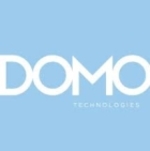What is our primary use case?
Our primary use case is to collect data from different sources and to build it for the house or data hub, or to fill already built-in appliances like Cloudera and Teradata.
How has it helped my organization?
It has helped us meet our monetization needs.
What is most valuable?
Real time is amazing. If you have AI use cases, you can predict if it's a threat or if it's a positive or negative transaction. You can use real time with PowerExchange to write data directly to Kafka, to consume, write, or parse data using an AI algorithm to detect if the data is positive or negative and to define what use cases you want.
What needs improvement?
It would be nice to move from Windows tools (like Developer, Designer, or Manager) and have everything in one place like DATAQ developer, which is eclipse-based and user-friendly.
CDC needs more improvement. It's stable and has good features, but it's only easy to develop if you are familiar with Linux.
Sometimes a new monitor will not be accurate in logging or you'll open a log and get a misleading error message. The connection parameter is sometimes inaccurate, or the parameter will not load. Proactive Monitoring doesn't work very well with all of the Informatica processes. The latest version came out five years ago and there has been no enhancement since then. It doesn't make sense for a product to be ranked number one but have no enhancements. The product hangs and you can lose control for several hours. It works, but it hangs.
For how long have I used the solution?
I have been using PowerCenter and PowerExchange for around 7 to 8 years.
What do I think about the stability of the solution?
It's stable and we rarely have any issues. During the setup, when developers tried to connect, there were some issues, but it ran smoothly once it was configured and fixed. Sometimes, there is conflict between servers (like Analytics, Data Quality, or PowerCenter) and we have problems with loading libraries.
What do I think about the scalability of the solution?
It's easy to scale, but it has a limit. For high availability or for service on the grid, it's okay, but it has a limit. If we had the option to enable scalability based on big data architecture, like Adobe or MongoDB, it would be easier. In Enterprise Data Catalog (EDC), you can extend them by adding nodes to the cluster, but currently, to maintain scalability in both centers, you'll add a node, join the domain after that to distribute work, but fortunately, this works well. We also got a complaint, when adding a node, that the session failed without recovery.
How are customer service and support?
For technical support, there are levels. The first level of support is called TechAccess and it's between Informatica and other vendors. TechAccess takes time and their response is often delayed. After that, we escalate and go to the Informatica level of support. Once we reach them, they proceed to explain the solution.
Which solution did I use previously and why did I switch?
We've tried SSIS and DataStage, but we prefer PowerCenter for stability and monitoring.
How was the initial setup?
The set-up was simple and I did it myself. If you try it one time, it'll be easy the next time. The one product that does need improvement in installation is Enterprise Data Catalog, EDC. It's very difficult and all my colleagues hate communicating with and installing EDC.
What about the implementation team?
I implemented it myself and with my team. We have expertise, so there was no need to engage Informatica Professional Services.
What's my experience with pricing, setup cost, and licensing?
The pricing is a little expensive, but in the same range as IBM and other competitors. There is not a big difference in pricing between its main competition. The pricing is mostly the same between other vendors.
What other advice do I have?
PowerCenter is good for large enterprises and good for ETL purposes, but not for ELT. If you need to go with ELT, Informatica has another package called Data Streaming that's more stable and recommended for a larger environment.
I would rate Informatica an eight out of ten.
Which deployment model are you using for this solution?
On-premises
Disclosure: My company has a business relationship with this vendor other than being a customer. Partner




















